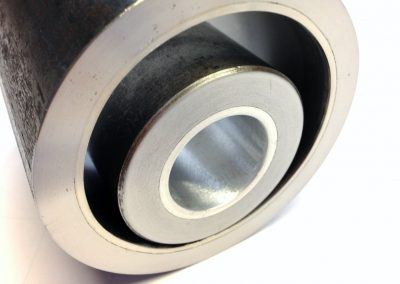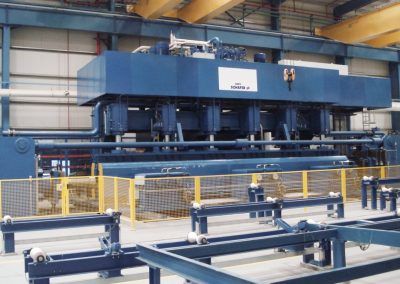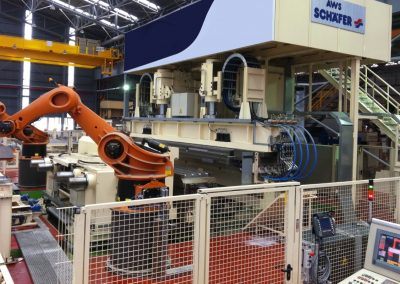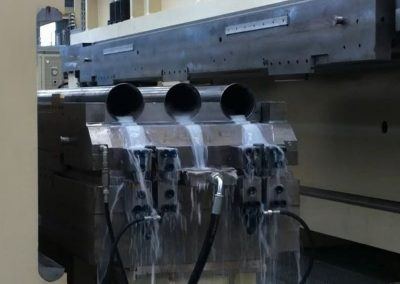Clad Pipe Technology
Cladding, bi-metal, lining: These are terms that describe the technology in which two different steel materials are joined together. A cost-effective alternative when pipes are used in corrosive and demanding conditions in oil and gas production.
Mechanical Pipe Cladding
Your AWS-specialists
The clad/bi metal pipes produced on hydroforming machines developed by AWS Schäfer are used where maximum demands are placed on corrosion resistance as well as tolerances on diameter, roundness and straightness.
Technical data
| Diameter: | up to 914 mm |
| Wall thickness: | from 1,5 – 40 mm |
| Lengths: | from 6 – 13 m |
Advantages
- Fastest cladding technology
- Multifunction in one machine: cladding – calibration – pressure testing
- High adhesive tension achieved through optimum process control
- Different materials and wall thicknesses can be used in the same mould
- Use of both seamless and longitudinally welded pipes
- Highest dimensional, form and repeat accuracy
Longitudinal Seam Strip Cladding System

Sascha Cuntz
Longitudinal seam strip cladding systems are used for the production of longitudinally welded clad or bi-metal pipes. Roll-bonded or explosive-cladded plates are used for this purpose. This combination brings significant economic advantages both when starting up or expanding an existing clad pipe production facility.
To ensure high surface coverage, the electroslag deposition welding process (RES) with a strip electrode is used as a post-plating process for joining the highly corrosion-resistant cladding materials in the area of the submerged arc weld seam. AWS longitudinal seam strip cladding systems provide a process for corrosion and wear protection that meets the demanding requirements of the oil and gas industry and, at the same time, can be cost-effectively integrated into existing large-diameter pipe production.
Advantages
- High process reliability
- Low error rate
- The low degree of mixing achieves high corrosion resistance
- Low investment costs











